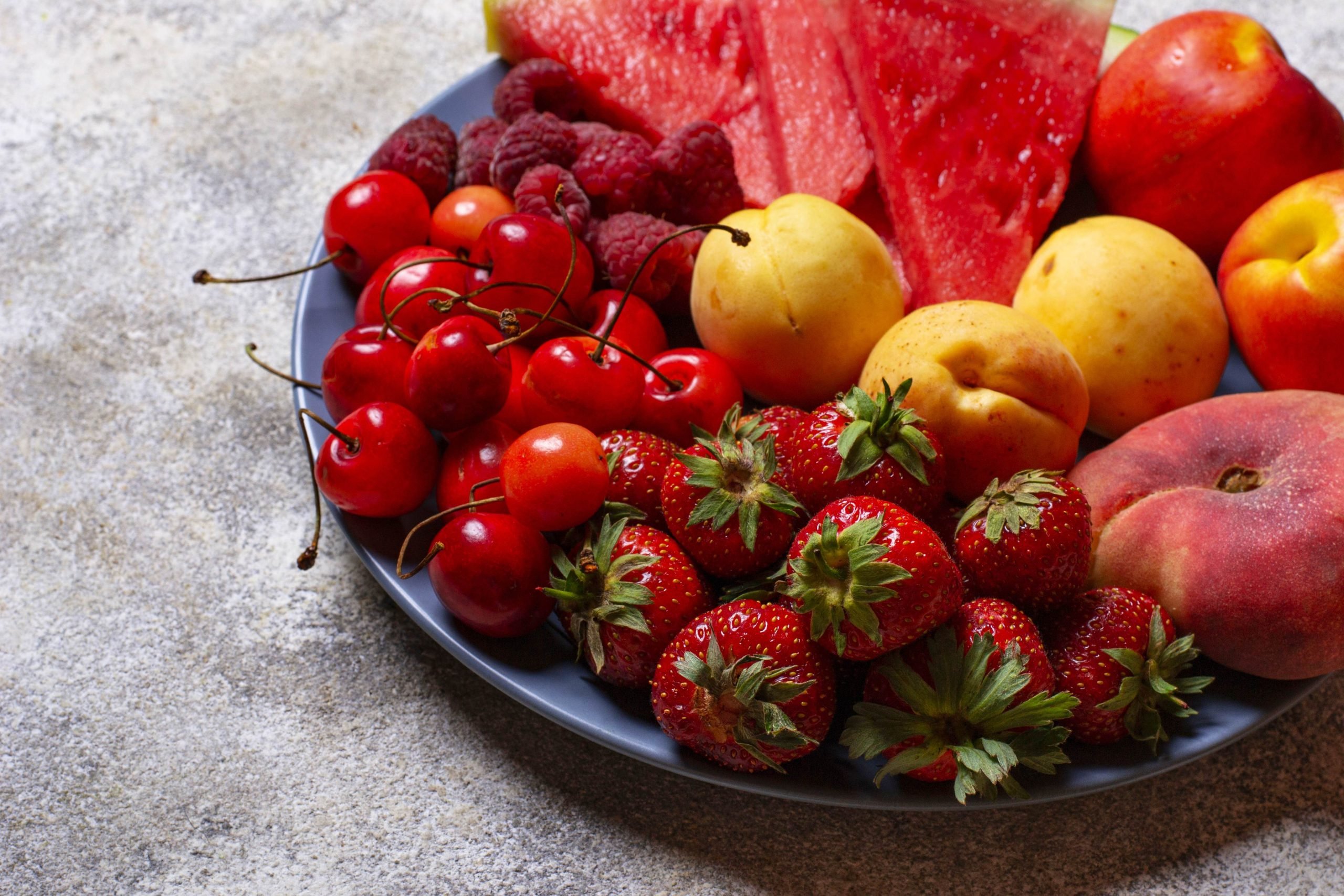Eating a wide range of colorful fruits and vegetables isn’t just visually pleasing, it’s one of the smartest and most effective strategies for supporting your health. From deep reds and bright oranges to vibrant greens and rich purples, each color on your plate brings a unique set of nutrients and health benefits. In this article, discover why diversity in plant-based foods matters and how you can easily incorporate more color into your daily meals for maximum nutrition and enjoyment.
What do colors mean in nutrition?
Each color group in fruits and vegetables indicates the presence of specific antioxidants, vitamins, and phytonutrients, all of which play vital roles in maintaining your well-being. Here’s a breakdown of what those colors mean for your body:
- Red: Foods like tomatoes, strawberries, cherries, and red peppers are rich in lycopene and anthocyanins. These nutrients support heart health, help reduce inflammation, and may even protect against certain cancers.
- Orange/Yellow: Think carrots, oranges, sweet potatoes, and mangoes. High in beta-carotene (a precursor to vitamin A) and vitamin C, these foods are great for immune support and vision health.
- Green: Leafy greens like spinach and kale, cruciferous vegetables like broccoli, and peas are loaded with chlorophyll, folate, and lutein. These nutrients are especially good for brain and eye health, as well as overall detoxification.
- Blue/Purple: Blueberries, eggplant, grapes, and blackberries contain anthocyanins and resveratrol. These powerful antioxidants are linked to memory support, cellular health, and may slow the effects of aging.
- White/Brown: Garlic, onions, mushrooms, cauliflower, and potatoes offer allicin and potassium. These foods are excellent for blood pressure regulation and immune health.
Why diversity matters
Eating the same fruits and vegetables every day limits the range of nutrients your body receives. Each plant offers a different profile of beneficial compounds, which work together to keep your body functioning optimally. A colorful plate ensures you’re getting a balanced spectrum of antioxidants, fiber, and micronutrients that help protect against chronic diseases, support digestion, and maintain energy levels.
Research consistently shows that people who eat a wide variety of fruits and vegetables have lower risks of heart disease, obesity, diabetes, and certain types of cancer. Diversity is not just about nutrition, it’s about creating a vibrant, satisfying eating experience that supports both health and happiness.
Tips to build a rainbow plate
- Start with a base of leafy greens like spinach, kale, or arugula.
- Add a mix of raw vegetables: shredded carrots, red cabbage, cucumbers, bell peppers, or radishes.
- Top with seasonal fruits: pomegranate seeds, apple or pear slices, orange segments, or blueberries.
- Use fresh herbs and spices, parsley, cilantro, turmeric, or basil, to add both color and flavor.
- Rotate your produce weekly by picking a new fruit or vegetable you haven’t tried before.
- Experiment with roasted veggie trays or stir-fries, mixing as many colors as possible.
Even small changes, like adding an extra color to your salad or smoothie, can make a big difference over time.
Budget-friendly variety
Eating colorfully doesn’t have to be expensive. Buy seasonal produce when it’s at its freshest and most affordable. Visit local farmers’ markets for better prices and unique finds. Frozen vegetables and fruits are also a fantastic, convenient option, they’re often picked at peak ripeness and retain most of their nutrients. Even canned options without added salt or sugar can be healthy additions, especially in soups and stews.
Plan your meals around what’s on sale or in season, and don’t be afraid to try unfamiliar items, you might discover a new favorite.
Meal inspiration
Here are some quick and delicious ideas for adding more color to your daily meals:
- Breakfast: Blend a smoothie with banana, spinach, frozen berries, and almond milk for a nutrient-packed start.
- Lunch: Try a quinoa salad with cherry tomatoes, cucumbers, carrots, purple cabbage, and a sprinkle of feta cheese.
- Dinner: Stir-fry tofu, red peppers, broccoli, snap peas, and mushrooms with ginger and sesame seeds for a rainbow on your plate.
- Snack: Sliced apple with peanut butter and cinnamon, or raw veggies with hummus.
Eating a rainbow isn’t just a fun idea, it’s a smart, science-backed strategy for nutrition and long-term health. The more variety you add, the better your body can access all the nutrients it needs for energy, repair, and disease prevention. Start by adding just one new color to your meals this week, and build from there. Your body, and your taste buds, will thank you.
🌈 When your plate looks like a palette, your health reflects the masterpiece. Eat colorfully, live vibrantly!
